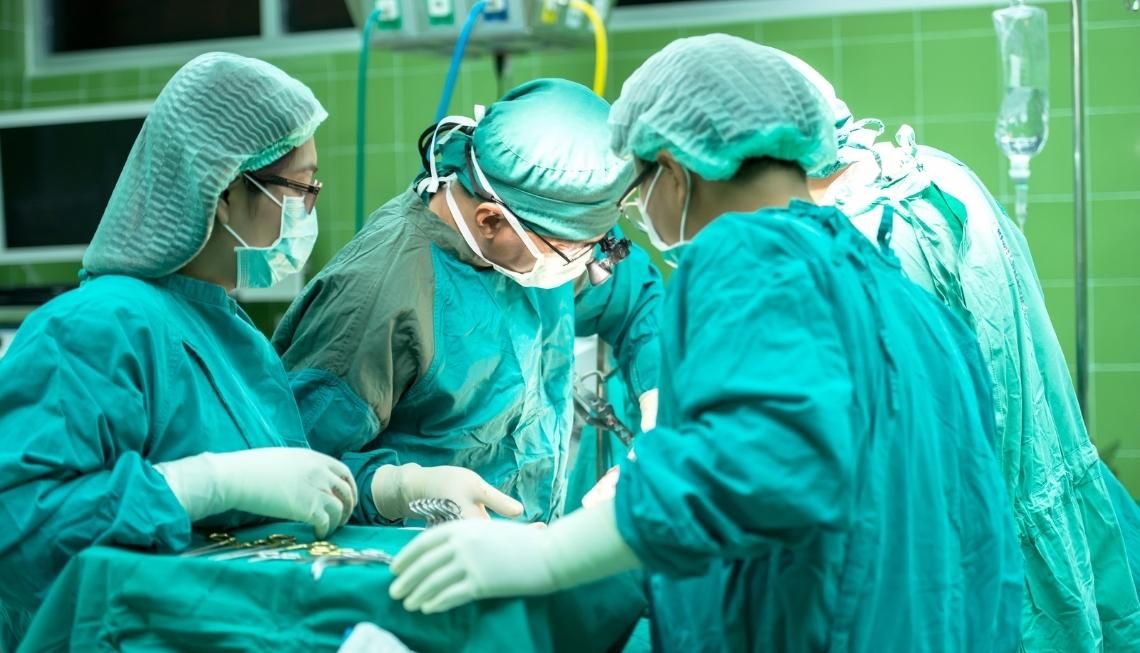How AI and genomics boosted Singapore’s Covid-19 response
Oleh Sean Nolan
Sutowo Wong, Director of Data Analytics at Singapore’s health ministry shared how technology can help tackle health issues earlier.

Letterman created the ambulance system that we know and rely on today, showing that innovative forms of healthcare are developed during crises. This is still the case today, with AI and genomics being used in Singapore’s response to the Covid-19 pandemic.
Speaking at GovInsider’s Festival of Innovation, Sutowo Wong, Director of Data Analytics at Singapore’s Ministry of Health explores the potential of these technologies. He shares how healthcare organisations can share data to shift care to the community.
The potential of genomics and AI
Genomics and AI helped the ministry to understand the spread of Covid-19 infections in Singapore. For example, there was a Covid-19 cluster at one of Singapore’s fishery ports and MOH teams were able to analyse these cases using genomics, said Wong.
They adopted a particular area of genomics which studies the relationship between the different strains of Covid-19. This helped MOH to recognise that the infections in the fishery port were similar to those from overseas, he shared.
Singapore used AI to help the ministry “identify the spikes” in respiratory infections, Wong explained. It used natural language processing to analyse the medical notes made by staff at emergency clinics. The AI could identify symptoms of respiratory conditions by picking out key phrases in these notes.
The tools used in Singapore’s response to Covid-19 “can give us a glimpse into what we can actually work on more in the future”, he shared.
The potential of genomics and AI is being explored by A*STAR, Singapore’s public sector R&D agency. Genomics can help identify the risk of Down syndrome in pregnancy and predict the likelihood for an individual to suffer from a disease, a spokesperson told GovInsider.
Researchers use AI to analyse genomic data, predicting how variation in genetics can lead to disease, for example. Algorithms can also identify the most effective drug combinations for individual cancer patients, the spokesperson shared.
Tackling issues earlier
Singapore plans to identify and tackle medical issues earlier, said Wong. One way to do this is for local care providers like GP clinics and community hospitals to play a larger role. Traditional hospitals will focus on specialist and emergency treatments, he added.
But there are certain IT tools that are needed in order for hospitals and community-based care providers to work together, Wong highlighted. First, there needs to be a framework for data sharing that identifies which organisation is the owner of which patient information.
Second, a platform for viewing patient data and evaluating when medical teams should intervene and assist patients is key. These tools will help care providers to treat patients, but can also provide reminders to “nudge the population to adopt a healthier lifestyle”, he shared.
Another way to treat patients earlier is to use predictive insights. For example, MOH is exploring how AI can help identify diabetic patients at risk of kidney failure, said Masagos Zulkifli, Second Minister for Health.
Socio-economic information and other lifestyle data can help healthcare organisations to make predictions about a patient’s health. This is because social factors can influence 80 per cent of health outcomes, the second minister stated.
The spirit of sharing
Data and information can be shared across countries, as well as between hospitals. India’s open source Covid-19 vaccination platform reflected “the spirit of sharing”, Wong acknowledged.
This platform enables citizens to book vaccine appointments and download a certificate saying they received the jab. India ensured there were no intellectual property claims over the platform, letting other nations copy its coding, wrote The Economic Times.
Nations and organisations should be more open about the work that they’re doing in order for communication to improve, Wong highlighted.
This will then enable them to “have a conversation about how they can cooperate and learn from each other”. A community can be formed when healthcare teams “have a sense of what is the value that each one of us brings to the table”, he continued.
This openness “will be a great starting point” before organisations can “then start to talk about collaboration”, Wong said.
Tech tools like genomics and AI are helping Singapore to deal with health issues today. But healthcare is continuing to innovate, enabled by more data sharing and connections between healthcare organisations.
